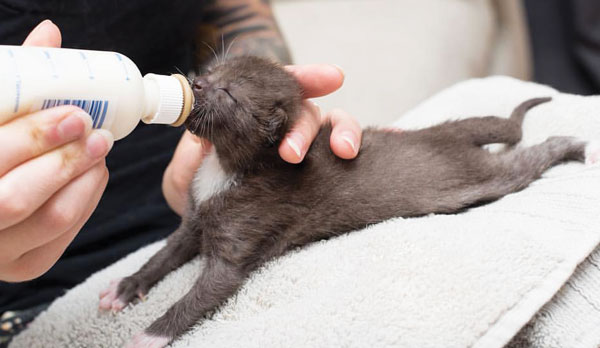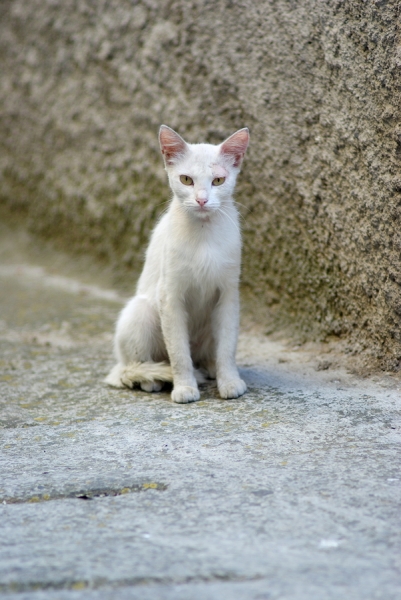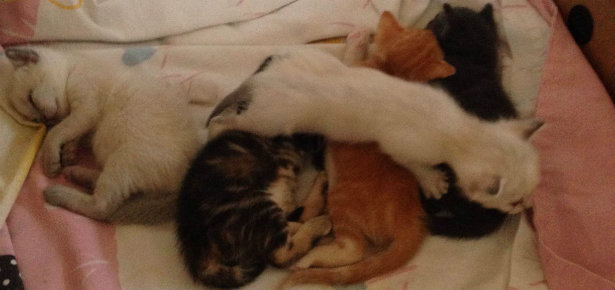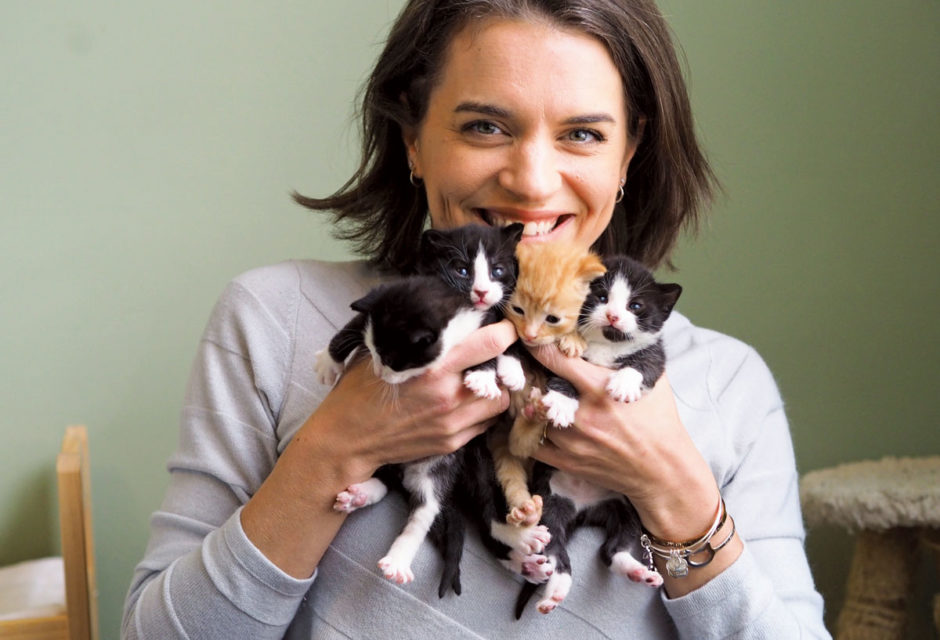
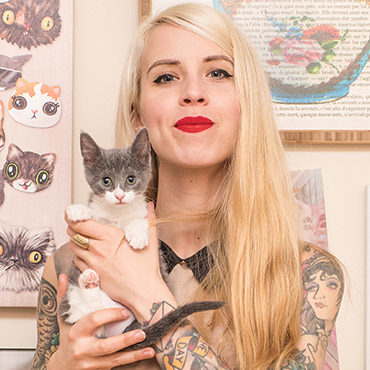
The Coolest Job Ever
Meet professional kitten rescuer Hannah Shaw!
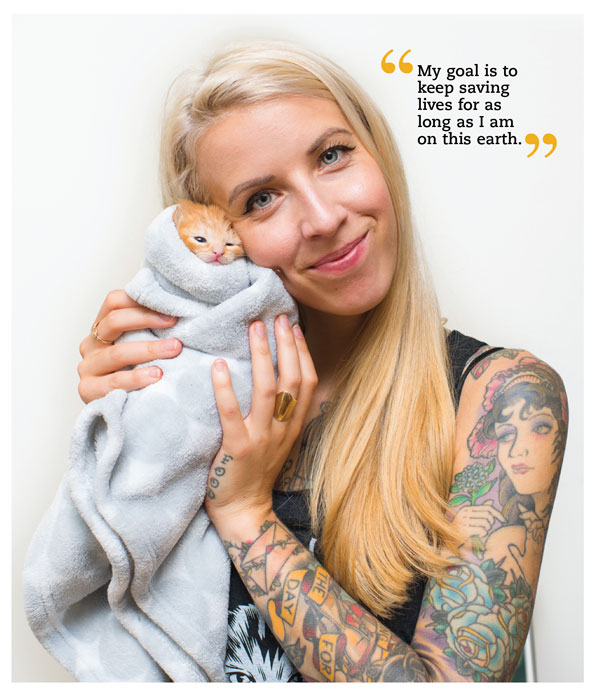 Hannah Shaw, aka Kitten Lady, is on a mission to change the world for the tiniest felines.
Hannah Shaw, aka Kitten Lady, is on a mission to change the world for the tiniest felines.
When she got started, Hannah Shaw had no idea she’d be rescuing kittens for a living. But after her first kitten rescue, she became obsessed with trying to save the lives of baby kittens, which grew into a mission that became her full-time job.
Focusing her attention on orphan kittens, this tattooed rescuer and humane educator is committed to helping others learn how to save the lives of kittens in order to change the way we treat and perceive this most vulnerable feline population. Along the way she’s gained a huge social media following and has been featured by major media outlets around the world. How cool is that? We asked her some questions.
Q: How did you get started rescuing orphan kittens?
I didn’t intentionally get involved in kitten rescue. Like many rescuers, it was kittens who found me! When I was about 20 and living in South Philadelphia, I found my first kitten, Coco, in a tree. After that, a veil was lifted and I started finding kittens everywhere: in alleys, under cars, in friends’ backyards. I learned that orphan kittens are typically killed in shelters due to the intensive care they require, so I felt driven to provide that care to them myself. I became totally obsessed with giving vulnerable orphan kittens a chance to live.
Q: What was your trajectory from helping a kitten to becoming Kitten Lady?
I didn’t become Kitten Lady overnight. At first, I just helped a handful of kittens I found outside, learning as best as I could with fairly limited resources. As more people found out about what I was doing, I started getting calls from friends, co-workers, and even strangers who had heard I was a “kitten lady.” Pretty soon I was coordinating rescue efforts with shelters and rescue organizations, and orphan kittens started to become my biggest priority.
I’ve been fortunate to work in animal welfare for most of my career, and throughout the years I have always lamented that neonatal kittens are so underserved in animal shelters. I’m grateful that as I’ve gained visibility and support, I’ve become able to focus full-time on changing that by providing humane education that helps shelters, rescues, and individuals save the lives of kittens.
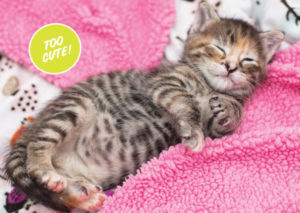
The most rewarding part of my work is seeing the impact I’m able to make for individual kittens…and knowing that I’m able to extend that impact tenfold by teaching others to do the same. When a kitten opens her eyes for the first time, I want her to open them to a world of hope and possibility, and it’s very fulfilling to be able to give that to them. While I can’t necessarily see every kitten I impact, it feels good to know that more kittens are being saved using the resources I’ve created.
Q: What is the hardest part of your job? And what keeps you going?
The hardest thing I deal with is the amount of inquiries I receive! Having a large social media platform is an incredible opportunity to disperse information, but it’s also a lot of pressure because people expect me to be readily available on a one-on-one basis. I receive more than 250 individual messages every day asking me to help. This tells me that there is so much more work to be done, and it motivates me to continue creating resources so that no one feels left in the dark, and everyone feels personally educated and empowered to save lives.
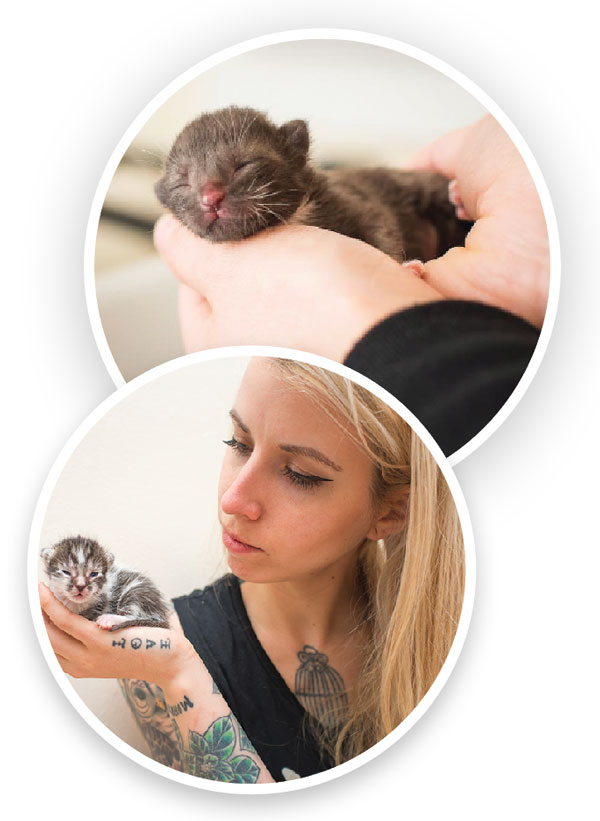
“Goodbye” is the goal of fostering, and I am a firm believer that you can’t sustainably save lives if you don’t know how to celebrate saying goodbye. After all, kittens don’t need us to keep them—they just need us to keep them alive. That’s why I focus on kittens age zero to eight weeks old, then adopt them into loving homes. The point is to save the maximum number of lives, and we do that by keeping space in our lives to foster.
I personally have two cats of my own. Coco is the first kitten I ever found, and she’s the inspiration for so much of what I do! My other cat, Eloise, came along about four years later—also an orphan I raised. The two of them are wonderful companions, but I do not intend to adopt more cats at this time. My goal is to keep saving lives for as long as I am on this earth, and I will always keep room in my life for fosters!
Q: Are any of your tattoos kitten-related?
While I don’t have any kitten tattoos, I do have several tattoos of wild cats: a bobcat, a cougar, and my favourite: a circus tiger mauling a ringleader. I’m actually every bit as passionate about the welfare of big cats as that of tiny kittens. For several years I provided animal care at a sanctuary for wild felids, and I worked and volunteered with wildlife protection organizations for much of my twenties.
Q: What should people do if they find a kitten or litter of kittens?
It all depends on the kittens’ age, where they’re found, what resources you have available, and whether there is a mom. Everything with kittens should be taken case-by-case!
As a rule, you should not assume that a litter of kittens is abandoned just because you don’t see the mom. If the kittens are unweaned, it’s important that they stay with mom unless they are truly orphaned. Give the kittens a bit of distance and see if the mom returns—if she does, that’s great! They can stay with her until they are old enough to be weaned, at about five weeks old. Don’t forget that the mom should also be sterilized so that no more kittens are born.
If the mom does not return within two to three hours, it’s time for you to step in and care for them. Most animal shelters do not have the ability to care for unweaned kittens on site, so the most humane thing you can do is offer to foster them yourself. You can learn everything you need to know about how to raise kittens at KittenLady.org/savekittens.
Q: How can other people get involved and help?
The best way to get involved with kitten rescue is to sign up to foster for your local animal shelter. Fostering is fun, rewarding, and doesn’t have to be hard! Anyone can foster kittens with the right supplies and information, and it’s only a commitment of a few weeks. The impact you’ll make will be lifesaving: shelters cannot save a kitten’s life unless there is someone signed up to foster, so by providing a foster home you are literally saving an animal that would otherwise be killed.
*You can find out more on Hannah’s YouTube channel and website, KittenLady.org, and follow her on Facebook and Instagram. Hannah also provides free printed materials to shelters all over the country so that people can learn to save kittens’ lives.
Kitten Lady’s Top 5 Tips For Fostering—Or Thinking About Fostering—Orphan Kittens
1. Get the right supplies! You will need specialty items such as kitten formula, bottles, baby blankets, baby wipes, a digital scale, and more. You can find information about what you’ll need at KittenLady.org/supplies.
2. Feed them properly. Always feed kittens fresh, comfortably warm formula, and feed while in a belly-down position. Never feed a kitten on her back, as this is dangerous and can cause the kitten to inhale fluid into the lungs. Provide food every few hours, according to their needs for their age. You can learn about feeding kittens at KittenLady.org/feeding.
3. Help them go to the bathroom. Kittens can’t go on their own during the first three weeks of life, so you can help them by stimulating them with a soft tissue to replicate the sensation of their mother licking them. Monitor for any concerning signs, such as diarrhea, and treat accordingly. Learn about bathroom business at KittenLady.org/bathroom.
4. Monitor, monitor, monitor! Weigh the kittens daily to ensure that they are making proper gains. Monitor their body composition and temperament and provide immediate treatment if any signs of illness occur. While kittens are very susceptible to illness, even sick kittens can often be saved if monitoring and early intervention practices are in place. Learn to assess kittens at KittenLady.org/assessing.
5. Practice healthy boundaries! Know that it’s okay not to take on too much at once, and to take a break in between litters. Self-care is animal care, and we have to take care of ourselves before we can take care of others. Keep your fostering sustainable so that you can continue to save lives for years to come. The animals need you!
Join the newsletter and never miss out on cat content again!
"*" indicates required fields
By clicking the arrow, you agree to our web Terms of Use and Privacy & Cookie Policy. Easy unsubscribe links are provided in every email.





